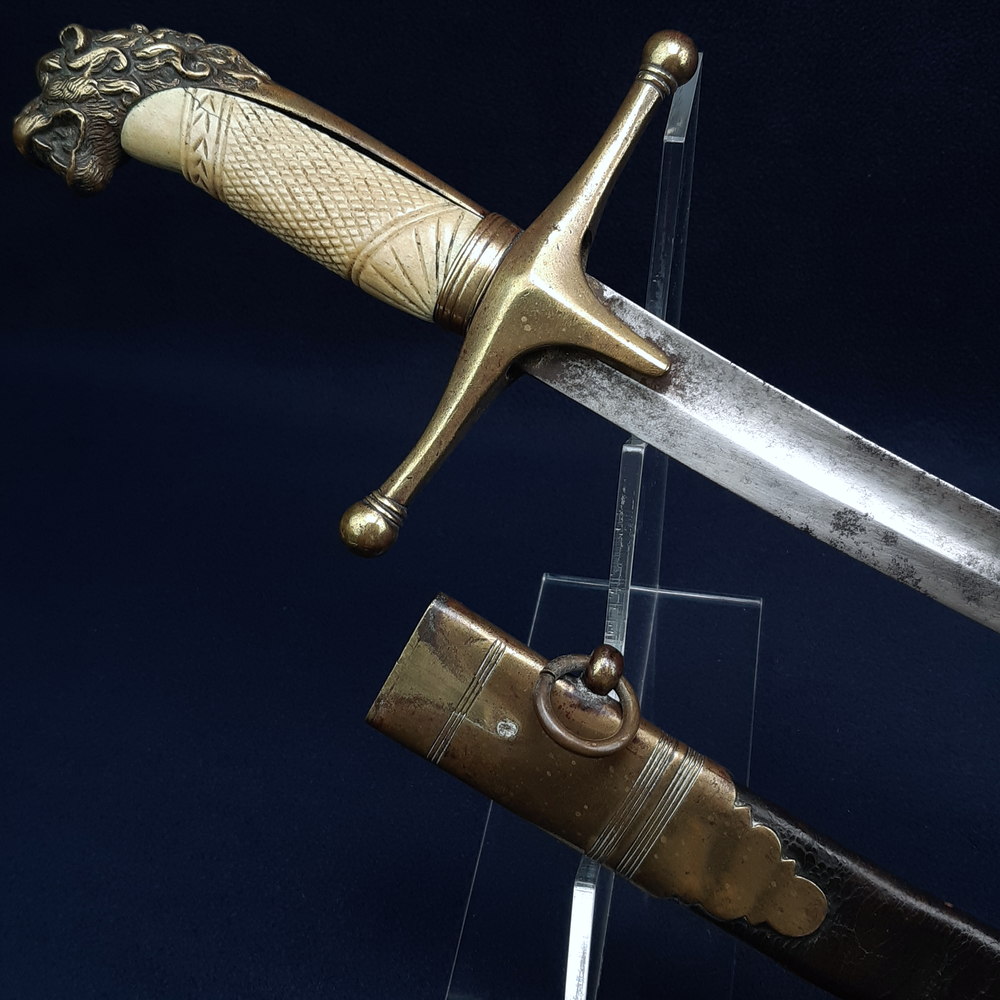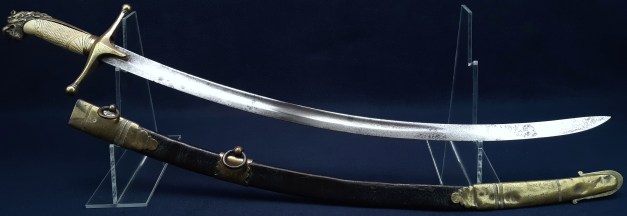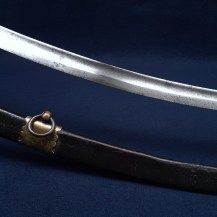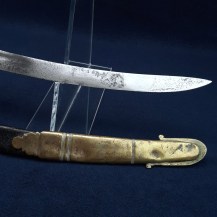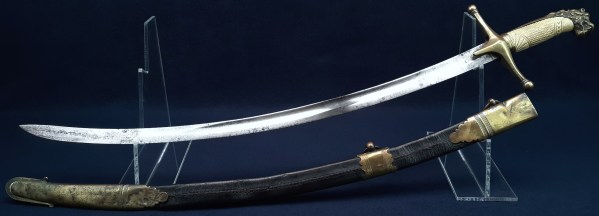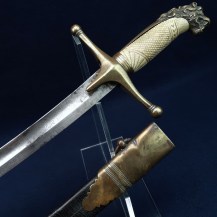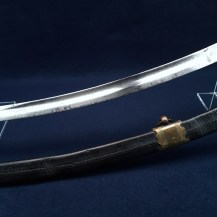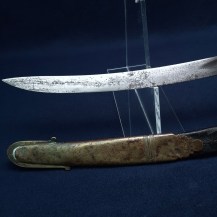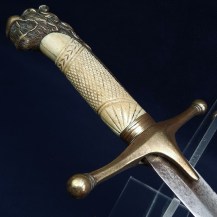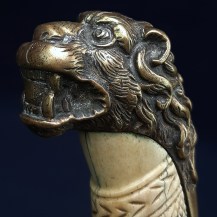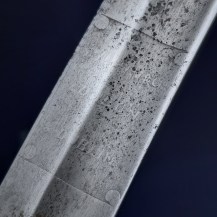British Bandsman’s Mameluke Sword, Early 19th Century
Curved single-fullered blade with spear point. Brass mameluke hilt with langets, its crossbar with ball finials, brass ferrule, brass backstrap and integral pommel in the form of a lion’s head. Carved ivory grip with chequering, banding and sunburst. Brown leather washer recessed into the hilt. Black leather scabbard with gilt brass locket, chape and middle mount, with hanging rings on the locket and middle rmount. Blade 25¼ inches in length, 1 1/16 inches wide at the shoulder, the sword 31 inches overall.
The only marking on the blade is a partly worn etched panel with the maker’s or retailer’s name ‘___PIN & Co, LONDON & DUBLIN’. The only maker or retailer that would seem to fit is Mappin & Co., which went by that name from around 1862-1863 (my sources differ on the start date, some ranging as early as 1859). However, I can find no record of Mappin having offices in Dublin.
This certainly a non-regulation sword - there were no standard patterns of sword carried by Army musicians until 1856, and regiments sourced at their own expense whatever they felt looked appropriately grand on parade resulting in a huge number of variations.
A number of bandsman’s swords take design cues from the dress mameluke: the mameluke sword was popular during the 19th century, initially introduced to Europeans during Napoleon’s Egyptian campaigns of 1798-1801. The Duke of Wellington owned and carried one from his service in India, and it became an outright craze among British officers to have one as a dress sword, officially acknowledged with the 1822 cavalry dress regulations and the 1831 pattern staff officer’s sword, which is still carried by General Officers to this day.
Five swords with identical carved grips and lion’s head pommels to this example, and with similar but not identical mameluke hilts & curved blades, are held at the Royal Armouries with item numbers IX.386, IX.395, IX.5385, IX.5480 and IX.7187. These are described as ‘Band Sword Type M’ – this is not an official Army designation, but a recognition by the Armouries curators that their group represents a clear type. I have also seen two examples of a different closely-related type, which has an identical grip to this one, a near-identical hilt (with shorter bars) but a different lion head at the pommel – one of these being Lot 108 at Warwick & Warwick auctioneers’ sale of the 16th October 2024.
The blade has some areas of cleaned pitting, and there is slight movement to the backstrap. There is some hairline cracking to the grip, not enough to affect it structurally, and one small chip near the pommel. Some dents to the scabbard fittings, which have an aged patina. Take care to support the scabbard once the sword has withdrawn, the leather remains flexible.
Due to the ivory used in its grip, this sword cannot be exported from the UK. It has been declared and registered as antique ivory under the provisions of the UK Ivory Act and therefore can be sold within the UK. Please note that this is a one-time registration: if you purchase this sword and wish to resell it you must register it again.

